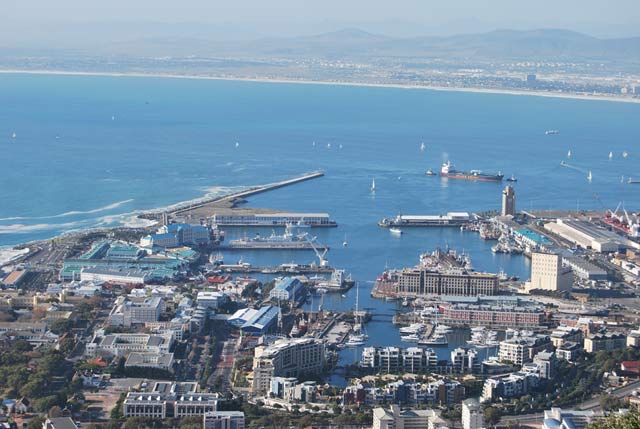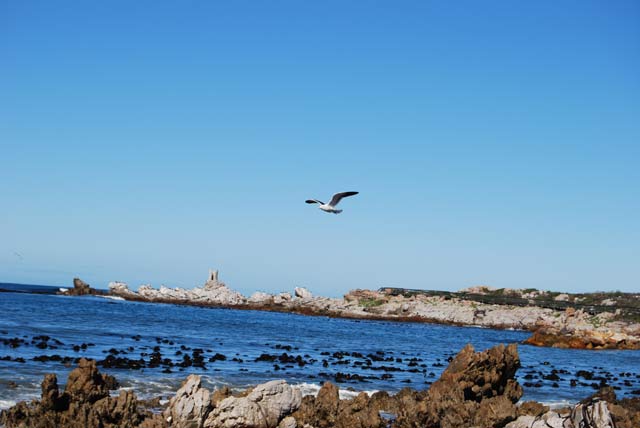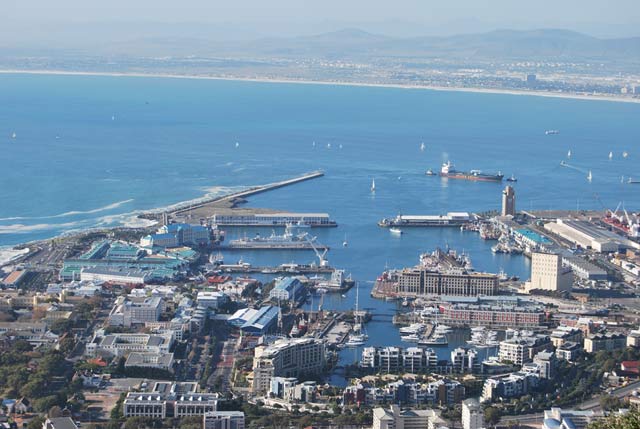What global warming could mean for sea butterflies and other marine creatures in the Cape Whale Coast Hope Spot
Over the past few weeks I have tried to provide the broadest possible context for the Cape Whale Coast Hope Spot via my blogs and photographs, both from a marine- and a land-based perspective, so that you may have a deep understanding of the great significance of this important initiative. Here’s a post that relates to global warming, unquestionably the biggest and most potentially devastating issue of our time. I hope you find it interesting...

We are living in a period marked by human dominance of biological, chemical and geological processes, with our cities, roads, railways, pipelines, airline routes, harbours, submarine cables and shipping lanes transposing an “anthroposphere” or human layer over the biosphere. These anthropogenic impacts are changing our environment at an unprecedented rate, the “anthroposising” of our planet causing the disruption of highly productive ecosystems.
Nowhere is this more evident than in the ocean where changes in ocean temperature and chemistry may have calamitous, unforeseen consequences, especially as warmer sea temperatures are associated with the spread of invasive species and marine diseases. A business-as-usual approach to carbon emissions which precipitates changes in ocean acidity/alkalinity is also likely to cause catastrophic knock-on effects such as the eventual disappearance of coral reefs.
The process of photosynthesis involves the fixing of carbon from carbon dioxide in the atmosphere and the release of oxygen as a by-product. This harvesting of light energy and conversion into chemical energy has been the primary driver of life on our planet since life began. Of all photosynthesis that takes place on Earth, approximately 40% is accounted for by the phytoplankton that lives in the top 100 metres of the sea, which is the zone penetrated by light from the surface. This activity generates about a third to a half of all global oxygen.
Like all living organisms marine phytoplankton is sensitive to the destructive properties of ultraviolet rays, which render it less productive in terms of photosynthesis. When ultraviolet radiation intensifies, phytoplankton moves from lighter to darker waters. And as stratospheric ozone becomes depleted, allowing increased solar ultraviolet radiation to penetrate the sea's surface, photosynthesis slows down.
Approximately one trillion metric tons of carbon dioxide is dissolved in the ocean, with a colder ocean absorbing more carbon dioxide than a warmer ocean. Global warming could result in a significant increase in the mean sea temperature with more carbon dioxide being released into the atmosphere and less carbon dioxide being dissolved, which in turn would increase the greenhouse effect in a feedback cycle.

Worldwide the ocean is acidifying faster than ecosystems can adapt and by 2050, the degree of ocean acidification predicted to occur over much of the Southern Ocean is likely to have extremely negative implications for the pelagic ecosystem.
Because of vulnerability to increased carbon dioxide concentrations in the ocean, shelled pelagic snails could become regionally extinct. These pteropods or sea butterflies are a keystone species because they not only play a significant role in the structure and functions of pelagic ecosystems; they also contribute to the regulation of atmospheric carbon by the ocean. The disappearance of pteropods which are eaten by a variety of marine species including sea birds, whales and commercially important fish is likely to have far-reaching implications, not only influencing the food chain of the Southern Ocean pelagic ecosystem but also affecting the role of the Southern Ocean as a carbon sink.
In the watery environment of the ocean which has no boundaries, all marine organisms and processes are interconnected and alterations in these processes may have untold consequences. As the ocean is fundamental to the survival of all life on Earth, a sustainable ocean must be our overriding priority, hence the goals of the Cape Whale Coast Hope Spot initiative.
Source
(Copy and photographs by Carole Knight – http://caroleknight.co.za/)
Call us and schedule your listing today! Contact Us
Copyright © 2025 Hermanus Online Magazine. Web Development by Jaydee media.

